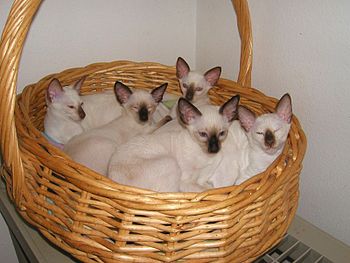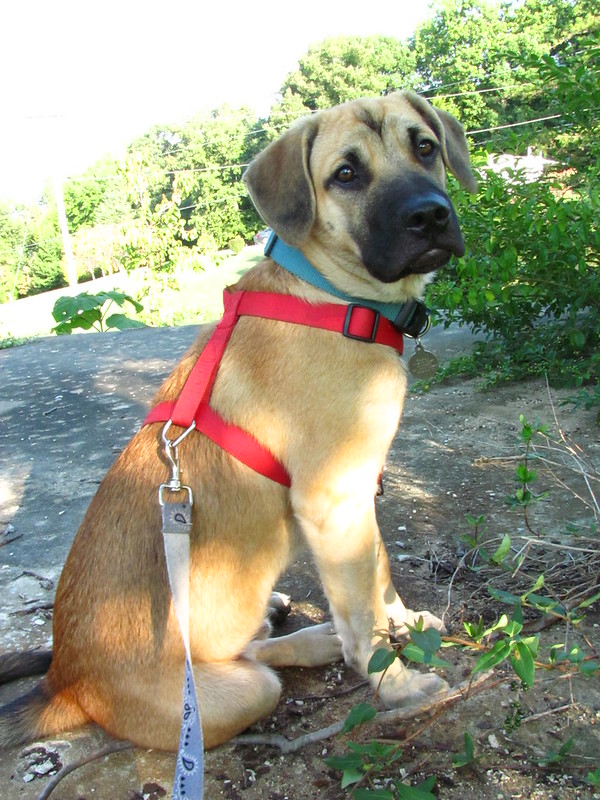 |
| Caucasian Ovcharov - Photo: Wikimedia |
The Caucasian Mountain Dog also is known as the Caucasian Ovcharka is an ancient breed that for centuries was little known outside the remote regions from which it hails, namely the Caucasus which incorporate: Georgia, Armenia, Azerbaijan, Dagestan, Iran, and Turkey. The Caucasian Mountain Dog or Ovtcharka (in Russian Ovtcharka means shepherd or sheepdog) is a member of the working group of dog breed and despite its appellation of sheepdog/shepherd, this dog was never a livestock herder but rather a guardian or protector which goes a long way in explaining it's not inconsiderable size!
The Caucasian Mountain dog was bred to protect livestock against wolves, bears and other predators; in fact, the Caucasian Ovtcharka has an uncanny resemblance to a bear!
Considered until fairly recently by many to be a descendant of the Tibetan Mastiff, updated archeological evidence suggests that its ancestry originated from ancient dogs that lived in the woody hills of Iraq and Mesopotamia. It is believed that assorted dog types that accompanied nomadic tribes that settled in the Caucasus regions, with little intervention and interference from outside influences, eventually evolved into the Caucasian Mountain Dog.
Up until the 1930s, the Caucasian Ovtcharka was little known outside its home range until it started appearing in European dog shows in Germany. Around 1952 the Caucasian Mountain Dog was sub-divided into two distinct breeds: the Transcaucasian Ovtcharka which is typically the heavier-boned, massive dog that hails from the mountainous regions; and the Caucasian Ovtcharka, the less heavily built type that originates from the steppe regions.
In 1976 the two sub-breeds were consolidated and reclassified as one breed, and these days the Caucasian Mountain Dog is expected to conform to a single standard. Be that as it may, however, the various sub-breeds can still be differentiated regionally from the various territories of the former USSR and nowadays one of the most coveted types of Caucasian Mountain Dog is the so-called Georgia sub-breed which is characteristically a thick-coated, heavy-boned, massive dog that most closely resembles a bear.
The potential of the Caucasian Mountain Dog as much more than a Livestock Guardian Dog (LGD) was quickly realized by the now-defunct Soviet Army and soon enough this dog breed was employed both during peace and wartime as auxiliary military "personnel" within the expanse of the Soviet Union. In the late 1960s, the Caucasian Ovcharka was widely introduced to East Germany specifically for border patrol duty, foremostly to patrol the infamous Berlin Wall. When the Berlin Wall came toppling down in 1989, the by-then, at least 7000-strong unit of Caucasian Mountain Dogs employed to patrol the Wall's perimeter was disbanded and many of those dogs found new homes within the newly emancipated civilian population!
Temperament
This dog breed was developed to guard flocks and livestock and hence has a strong inherent guardian/protector trait. Much as a Border Collie family dog will tend to herd its family as a substitute flock of sheep, the Caucasian Mountain Dog will have the tendency to be somewhat protective of its immediate family, a characteristic that has obvious benefits but perhaps less obvious consequences. The Caucasian Ovcharka is a strong-willed (some might say stubborn) breed of dog that requires a firmer hand for proper socialization and training. The so-called stubborn nature of this dog type is not surprising when one considers that it was bred over hundreds of years for these exact qualities.
This dog was bred to largely exist independent of humans (except for its shepherd) and was bred to co-exist with the livestock it was guarding; thus the Caucasian Mountain dog breed is inherently wary of strangers be they people or animals. Unsurprisingly, the Caucasian Ovtcharka is most active at night (livestock predators tend to hunt under the cover of night) and though it may give the impression that it's a big lazy dozing dog, at the slightest hint of intruders the Caucasian Mountain Dog will nimbly get to its feet, sound the alarm (barking) and immediately go to confront the threat!
The Caucasian Ovcharka takes the protection of its territory (these days consider that the family yard) very seriously and will consider any encroachment by a stranger as a threat. Despite its formidable size, this dog is characterized by the use of minimal force to dissuade any threat. Such minimal force may likely take the form of confronting the predator and barking and growling aggressively; usually that is enough to change the minds of most intruders because much like its wild Canid counterparts, this old dog breed still retains the mindset that physical (or deadly) force should be a last resort since it tends to be counterproductive (i.e., injury to either party).
Any Good With Kids?
As previously noted this dog breed tends to substitute its immediate family for the livestock it was selectively bred to protect; in other words, this dog is strongly protective of members of its family. Hence it is important to understand that this dog could perceive rambunctious or rough child's play between a family member and a friend (as is the tendency with boys) to be a threat and its hardwired protect-the-flock genetics will immediately kick in!
Thus it is vitally imperative to properly socialize this dog breed and also explain to your kids that just because they know that "Shaggy" would never hurt them, they should understand that the same may not go for their friends unless the dog knows them well (i.e., has accepted them as an extension of its flock). Obviously, with a dog this size all activity around small children should be supervised because though the family pet may not intend harm, it's a big dog that during the heat of play may easily forget its formidable strength and size and could accidentally hurt a young child!
The Question Of Apartment Dwelling?
By and large, the Caucasian Mountain Dog does not make the ideal apartment dweller. Although like most big dogs its energy level is somewhat low this dog breed is inherently nocturnal and was bred to alert and warn of and off intruders. In other words, your love for your Caucasian Mountain Dog could well translate into hatred from your neighbors because your Caucasian Ovcharka is driving them crazy with its nightly cacophony (barking...which is especially true if your neighbors are creatures of the night aka party animals).
Interactivity With Other Dogs
From a genetic viewpoint, the Caucasian Mountain Dog was never bred to be overly friendly with other canids be they dogs or wolves, because as a flock guardian it would have been expected to ward off all potential predators which naturally would have included feral dogs. However as with most any breed of dog timely and proper socialization usually overcomes any unfriendliness towards other dogs or animals in this breed!
Caucasian Mountain Dog Breed Standard
Currently, there appear to be conflicting breed standards which could be in part explained by the different sub-breeds and the late acceptance of this breed into the AKC; as of now, this dog breed has no AKC ranking. Only recently has the AKC moved to officially recognize this dog breed (May 2007) even though the Caucasian Ovcharka has been on record with the FSS (Foundation Stock Services) since 1996. From January of 2008, the Caucasian Mountain Dog will be allowed to formally compete in the AKC Companion Events.
Size Requirements:
The following height measurements are for the mature dog and are measured up to the shoulder bone.
Height of Males: 25.5 - 30 inches (64cm - 70cm)
Height Females: 24.5 and upwards
Weight of Males: 100lbs + (45kg - 70 kg)
Weight Females: 80lbs + (37kg - upwards)
It should be noted however that for the Kavkazskaya Ovcharka Breed (the Georgian Caucasian Mountain Dog sub-breed that most closely resembles a bear) the requisite dimensions differ considerably:
Height of Male: 28.3 - 29.5 inches (72cm - 75cm; minimum is 68cm or 26.8 inches)
Female Height: 26.0 - 27.2 inches (66cm - 69cm; minimum is 64 cm or 25.2 inches)
Naturally, the weight of the Kavkazskaya Ovcharka Breed will tend to be somewhat heavier and it is not unusual for males to top 180lbs!
The Caucasian Mountain Dog falls under the category of Working Dogs as a Livestock Guardian Dog (LGD).
By Kayyne Nynne - Article Source: EzineArticles

















